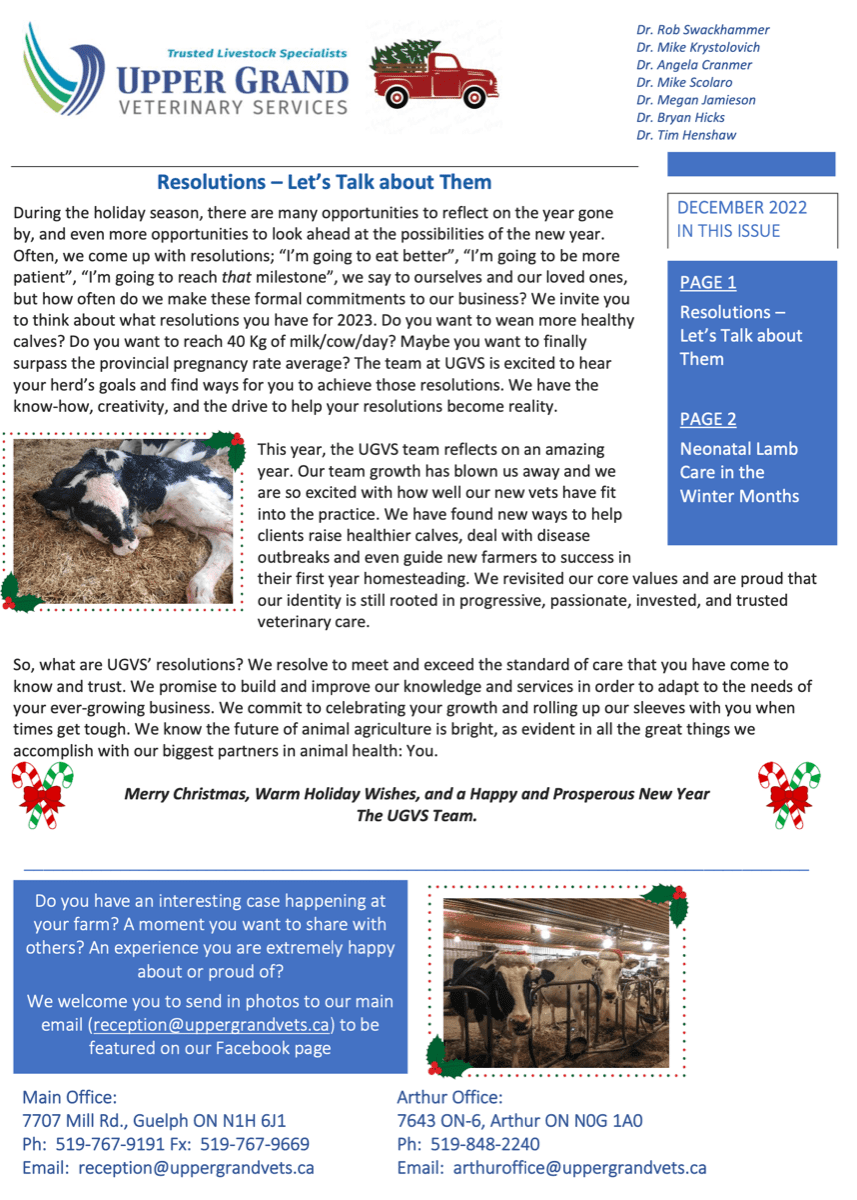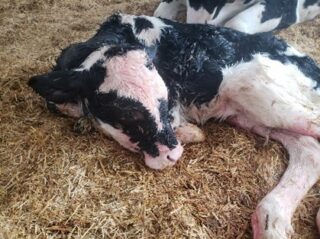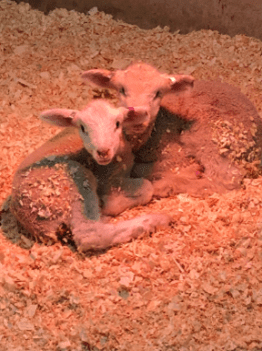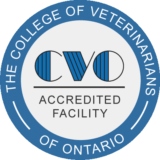UGVS Newsletter – December 2022

Resolutions – Let’s Talk about Them
During the holiday season, there are many opportunities to reflect on the year gone by, and even more opportunities to look ahead at the possibilities of the new year. Often, we come up with resolutions; “I’m going to eat better”, “I’m going to be more patient”, “I’m going to reach that milestone”, we say to ourselves and our loved ones, but how often do we make these formal commitments to our business? We invite you to think about what resolutions you have for 2023. Do you want to wean more healthy calves? Do you want to reach 40 Kg of milk/cow/day? Maybe you want to finally surpass the provincial pregnancy rate average? The team at UGVS is excited to hear your herd’s goals and find ways for you to achieve those resolutions. We have the know-how, creativity, and the drive to help your resolutions become reality.
 This year, the UGVS team reflects on an amazing year. Our team growth has blown us away and we are so excited with how well our new vets have fit into the practice. We have found new ways to help clients raise healthier calves, deal with disease outbreaks and even guide new farmers to success in their first year homesteading. We revisited our core values and are proud that our identity is still rooted in progressive, passionate, invested, and trusted veterinary care.
This year, the UGVS team reflects on an amazing year. Our team growth has blown us away and we are so excited with how well our new vets have fit into the practice. We have found new ways to help clients raise healthier calves, deal with disease outbreaks and even guide new farmers to success in their first year homesteading. We revisited our core values and are proud that our identity is still rooted in progressive, passionate, invested, and trusted veterinary care.
So, what are UGVS’ resolutions? We resolve to meet and exceed the standard of care that you have come to know and trust. We promise to build and improve our knowledge and services in order to adapt to the needs of your ever-growing business. We commit to celebrating your growth and rolling up our sleeves with you when times get tough. We know the future of animal agriculture is bright, as evident in all the great things we accomplish with our biggest partners in animal health: You.
Merry Christmas, Warm Holiday Wishes, and a Happy and Prosperous New Year
– The UGVS Team.
Neonatal Lamb Care in the Winter Months
By: Dr. Megan Jamieson
The cold winter months are upon us and for some of our producers, newborn lambs will be coming and facing the challenge of cold temperatures and potentially harsh climate. During this time of year, we can see an increase in neonatal lamb death due to hypothermia (chilling) and hypoglycemia (starvation).
Key Points:
- Lambs rely on their own limited supply of body fat stores (brown fat) as well as a consistent supply of milk from the dam to create energy and heat for survival.
- Ensuring newborn lambs are clean and dry as soon as possible will greatly increase survival rates.
- Newborn lambs should be up and eating within the first 2 hours of life.
- It is recommended that a newborn lamb receive 50ml/kg (~23mL/lb) in the first 2 hours of life and a total of 200ml/kg (~90ml/lb) in the first day.
- Normal temperature of a lamb is 39˚C-40˚C (102˚F-104˚F).
Useful Items:
- Rectal thermometer
- Tube feeder (a large catheter tip syringe + red rubber feeding tube work great!)
- Frozen colostrum &/or colostrum replacer
- Heat lamps, warming boxes, lamb coats, dry towels
- Bottle(s) of 50% dextrose
| Signs of MILD hypothermia/hypoglycemia: | Actions to take: |
|
|
| Signs of SEVERE hypothermia/hypoglycemia: | Actions to take: |
|
|





